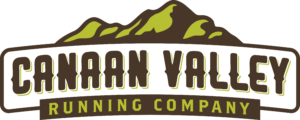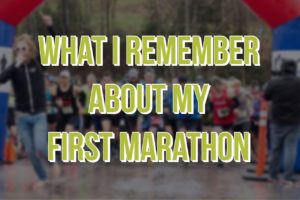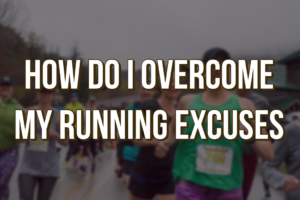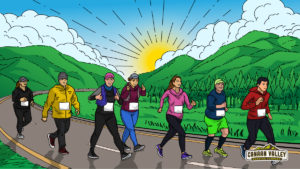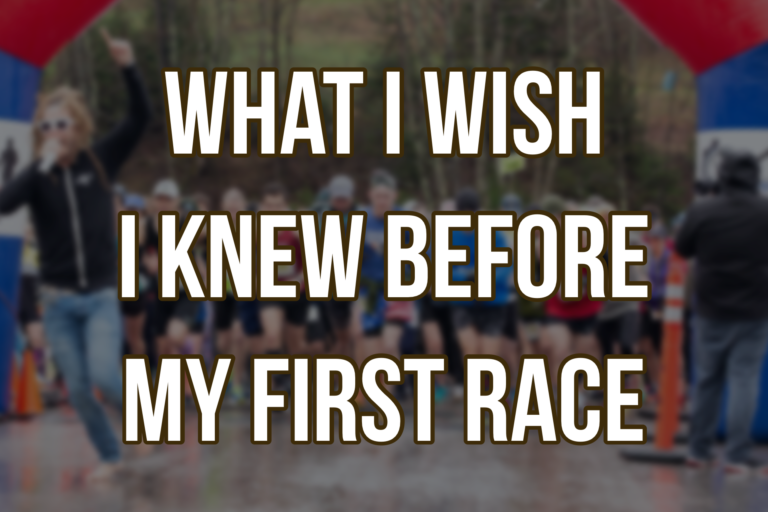
What I Wish I Knew Before My First Race
If you’re like me, you run for yourself — it’s not a competitive thing. It’s not something you do for glory or bragging rights. But if there is one thing I’ve learned since I started racing, it’s that races are fun. I mean, really fun! They’re not about being competitive. They’re a way to expand your horizons, challenge yourself, shake up your routine, and form some great memories.
Even if you have no plans of ever being a Boston Qualifier, doing a race is something you have to do at least once. What you’ll probably realize is that you want to do as many races as you can in as many locations as you can.
While pretty much all races were canceled or postponed throughout the earlier part of 2020 because of the coronavirus pandemic, there are still plenty of races that are proceeding as scheduled this upcoming fall. So I hope you’ve been training properly! I’m here to encourage you to register.
Now, for first-time racers, there are a few surprises along the way if you don’t know what to expect. More importantly, there are a few pointers I wish some people had given me before my first race so that I could have better prepared myself.
Here’s what I would tell you. Other runners will probably have advice of their own (some of them might even disagree with my advice or offer a different perspective). That’s fine — everyone is going to be a little bit different. But from my experience, this is what I would tell a newbie race participant:
- Running the distance of the race as part of your training isn’t necessary. Sure, it might give you some confidence and make you feel better. But if you’re training for a marathon, you don’t have to run 26.2 miles as part of your training. Same with a half-marathon and running 13.1 miles. As long as you’re strong enough to comfortably run half the distance during training, you can count on your adrenaline on race day to give you a boost of endurance and carry you farther than you typically go.
- Don’t fall for the misconception that you need to gorge yourself before a race. A 10K or shorter really requires no major change in diet, but if you’re doing, say, a 10-miler or a half-marathon, you will want to do what’s known as “carb loading.” Carb loading isn’t just having a big pasta dinner the night before the race. You need to start adjusting your diet three days out from race day. Cut back on fat and protein while increasing your consumption of carbohydrates. The idea is that carbs are easier to digest and provide your body a better source of energy. Simply eating a ton of food will make you feel weighed down and sick. On that note…
- Don’t eat anything you’re not used to eating the night before or the morning of. The last thing you want is to realize that this new food upsets your stomach. Stick with your routine as much as possible.
- Ideally, you’ll be able to get eight hours of sleep the night before the race, but that isn’t always possible. Some races require you get up really early — which might mean you would have to fall asleep way earlier than your normal bedtime. Forcing yourself to bed early could just result in tossing and turning, ultimately causing you to get less sleep than you normally would. You’re better off getting six hours of comfortable sleep than trying to force an early bedtime and staying up all night. You can always take a nap after the race if you need to do so.
- Dress in running gear that you don’t mind losing. If it’s a long course (a half-marathon or a marathon), you might need to shed some layers and drop a jacket or hat somewhere along the route. While you might be proud to wear your favorite track jacket for your first race, you’ll be really reluctant to lose it when you’re sweltering hot around mile 10.
- Along those same lines, don’t wear anything you haven’t worn before. You never know how irritating an article of clothing can be until you’ve had to wear something mildly uncomfortable while running 13.1 miles. An itchy collar or material that chafes will really ruin the experience.
- When you go to pick up your bib and registration packet, take a chance to figure out logistics like where you’ll park, how you’ll walk from the parking lot to the start line, whether there will be bathrooms available before the race, and so on. Race day can be a little hectic, so you don’t need the added stress of getting lost.
- Most races offer some kind of bag check so you can have dry, clean clothes available after the race. Take advantage of it! You will want to get out of your sweaty gear and put on something clean. However, don’t put anything valuable in your checked bag. (Personally, I’ve never had a negative experience where a volunteer lost anything, but you’re better safe than sorry.)
- While you’re running the race, you’ll pass many hydration stations where volunteers are handing out small cups of water or Gatorade. If you’re thirsty (and you probably will be), make eye contact with one of the volunteers as your way of saying you plan to intercept their cup. They’ll hold the cup out to you, and you can take it while still running. Be prepared to get a little wet (and, in the case of Gatorade, a little sticky).
- After you cross the finish line, keep moving. Your natural inclination will be to sit down and rest immediately, but walking at even a slow pace for about 10 minutes will help prevent stiffness from setting in later.
- Probably the most important lesson of all, however, is that you will see people along the racecourse who are cheering you on with signs that say, “You’re almost there!” These people mean well, but unless you are actually a quarter-mile from the finish line, the harsh reality is that you are definitely not almost there. Stay strong!
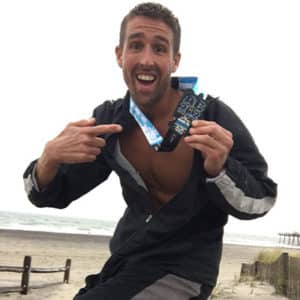
Dylan Roche
is an Annapolis-based writer and marathon runner. As a journalist focused on everything from fitness to arts and culture, he has written for a variety of publications, including Livestrong, What’s Up Annapolis, OurHealth Virginia, UpstART and Chesapeake Family Life. His first novel, “The Purple Bird,” came out in 2019. Follow him on Twitter and Instagram at @DylanIsWriting
